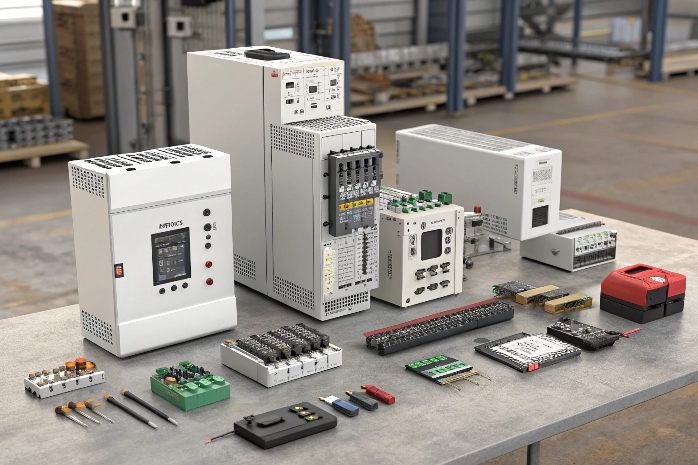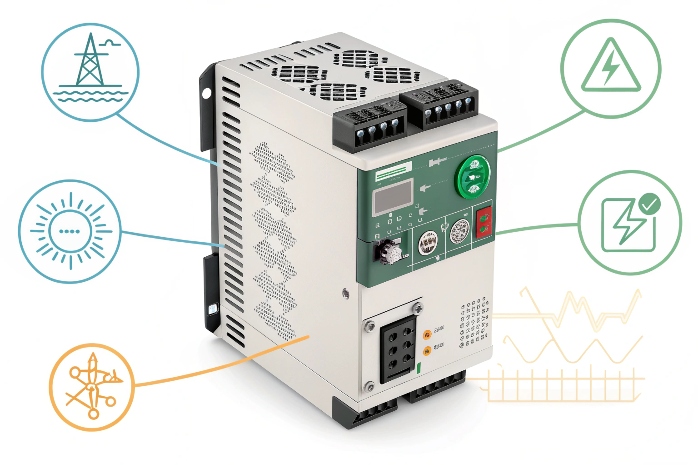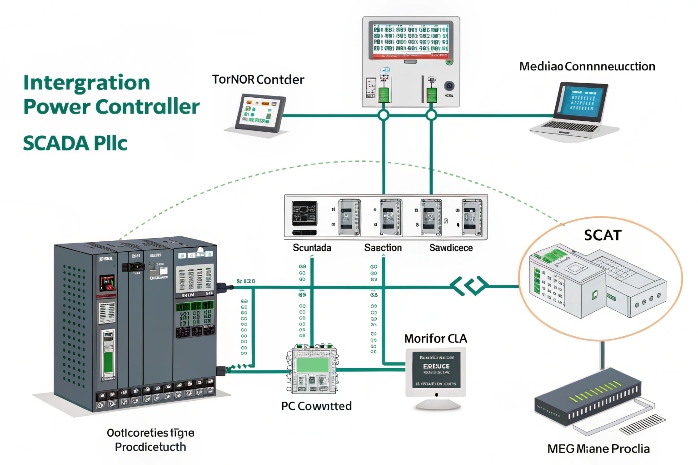Views: 0 Author: Site Editor Publish Time: 2025-07-11 Origin: Site









Power management issues plague your industrial operations. Equipment performance fluctuates while energy costs soar. I'll show you how to select the perfect thyristor power controller for your needs.
Choose a thyristor power controller based on your voltage requirements, load type, control method needed, communication protocols, and protection features. Match the controller specifications to your specific industrial application.
Selecting the right controller can dramatically improve your production efficiency and reduce energy costs. Let me guide you through the key factors.

You're confused by the variety of controllers available. Different control methods seem technical and complex. I'll break down the main types to help you understand what you need.
The main thyristor power controller types are phase angle controllers for precision variable loads, zero-crossing controllers for on/off applications, and burst firing controllers for efficient heating processes. Each suits different industrial requirements.
Each control method serves specific purposes in industrial applications. Phase angle control provides smooth, continuous power regulation by adjusting the firing angle during each half-cycle. This method offers precise control but generates more harmonics. Zero-crossing (or zero-switching) controllers turn on only when voltage crosses zero, reducing electrical noise but offering less precision. They're ideal for resistive loads like heaters. Burst firing controllers combine features of both, sending complete cycles in timed bursts for balanced performance.
| Control Type | Best For | Advantages | Disadvantages |
|---|---|---|---|
| Phase Angle | Inductive loads, transformers, variable resistance heaters | Fine precision control, smooth operation | Higher harmonics, power factor issues |
| Zero-Crossing | Resistive loads, infrared heaters | Lower harmonics, less EMI, longer heater life | Less precise control, not suitable for inductive loads |
| Burst Firing | Most heating applications | Good balance of control and low harmonics | May cause thermal cycling in some applications |
I installed phase angle controllers for a glass manufacturing client last year. Their furnace temperature stability improved dramatically, resulting in 15% fewer defects in the final product.
Your equipment demands varying power levels. Undersizing causes failures while oversizing wastes money. I’ll explain how to calculate the right size controller.
To determine proper thyristor controller sizing, calculate your maximum load current plus 20% safety margin, consider peak voltage requirements, and factor in duty cycle. This prevents overheating and ensures reliable operation.
Begin with an accurate assessment of your power needs. Calculate your maximum load current (I = P/V for single-phase or P/(√3×V) for three-phase systems). Always add a safety margin of 15-20% to accommodate surges and future expansion. Consider the nature of your load—inductive loads may require controllers rated for higher current due to inrush demands. Pay attention to duty cycle requirements. If your process requires continuous operation at high power levels, you’ll need more robust cooling systems. Ambient temperature also affects controller performance, so consider your factory environment when selecting cooling options.
| Sizing Factor | Calculation Method | Example |
|---|---|---|
| Load Current | P/V (single-phase) or P/(√3×V) (three-phase) | 100kW/400V = 250A (single-phase) |
| Safety Margin | Current × 1.2 | 250A × 1.2 = 300A |
| Cooling Requirements | Based on duty cycle and ambient temperature | Water-cooling for >80% duty cycle in >35°C environments |
| Voltage Rating | ≥ Peak system voltage | 480V system = minimum 600V rating |
When I upgraded a steel mill's rolling equipment, I initially selected thyristors based only on average load. This led to overheating during peak operations. Recalculating with maximum load plus margin solved the problem permanently.

Your facility uses various control systems that need to work together. Integration seems complex. I'll highlight the essential communication features to consider.
Look for thyristor controllers with industry-standard protocols like Modbus, Profibus, or EtherCAT, digital and analog I/O capabilities, and remote monitoring support to integrate with your existing SCADA or PLC systems.
Modern industrial environments demand seamless integration between power controllers and supervisory systems. Start by identifying which communication protocols your existing systems use. Most modern facilities use Modbus RTU/TCP, Profibus, or Ethernet-based protocols like EtherCAT or Profinet. Ensure your controller supports these standards. Look for controllers that offer both digital and analog I/O points for direct connections to sensors and actuators. Remote monitoring capabilities allow real-time performance tracking and troubleshooting without physical presence. Many advanced controllers now offer cloud connectivity for data logging and analytics, enabling predictive maintenance.
| Communication Feature | Benefit | Industry Application |
|---|---|---|
| Modbus RTU/TCP Support | Widely compatible with most industrial systems | General manufacturing, process control |
| Profibus/Profinet | High-speed deterministic communication | Automotive, high-precision manufacturing |
| EtherCAT | Ultra-fast synchronization | Motion control, robotics |
| Analog/Digital I/O | Direct sensor connection | Temperature monitoring, fault detection |
| Web Interface | Remote monitoring and configuration | Multi-site operations |
I recently implemented a system using thyristors with EtherCAT communication for a cement kiln. The microsecond-level synchronization improved temperature stability dramatically, reducing energy consumption by nearly 8%.
You worry about equipment failures and downtime. Protection features seem numerous but confusing. I’ll explain which safety features are essential for your application.
Evaluate thyristor controller protection by ensuring it includes overcurrent, overvoltage, phase loss, and thermal protection features. Look for controllers with fault diagnostics, SCR failure detection, and appropriate IP/NEMA ratings for your environment.

Protection features directly impact system reliability and longevity. Start with the basics: overcurrent protection prevents damage during load short circuits or abnormal conditions. Overvoltage protection shields sensitive components from power surges. Phase loss detection prevents single-phasing, which can damage three-phase equipment. Thermal protection monitors heat sinks and internal components to prevent overheating. Beyond these fundamentals, look for advanced diagnostics that can predict failures before they occur. SCR failure detection identifies when individual thyristors have failed, allowing scheduled maintenance instead of emergency repairs. Consider your operating environment when selecting enclosure ratings. Dusty environments require higher IP/NEMA ratings to prevent contamination.
| Protection Feature | Purpose | Critical For |
|---|---|---|
| Overcurrent Protection | Prevents damage during short circuits | All applications |
| I²t Fusing | Fast response to protect semiconductor | High-power applications |
| Phase Loss Detection | Prevents single-phasing damage | Three-phase systems |
| SCR Failure Detection | Identifies component failures | Critical continuous processes |
| Thermal Monitoring | Prevents overheating | High duty cycle applications |
| IP65/NEMA 4 Rating | Protects from dust/water | Harsh environments |
During installation at a glass factory, I selected thyristors with advanced SCR failure detection. Within the first month, the system alerted us to a degrading component, allowing replacement during scheduled maintenance rather than facing a costly emergency shutdown.
Selecting the right thyristor power controller involves matching specifications to your application, considering future needs, and prioritizing reliability features that protect your investment and production capabilities.
